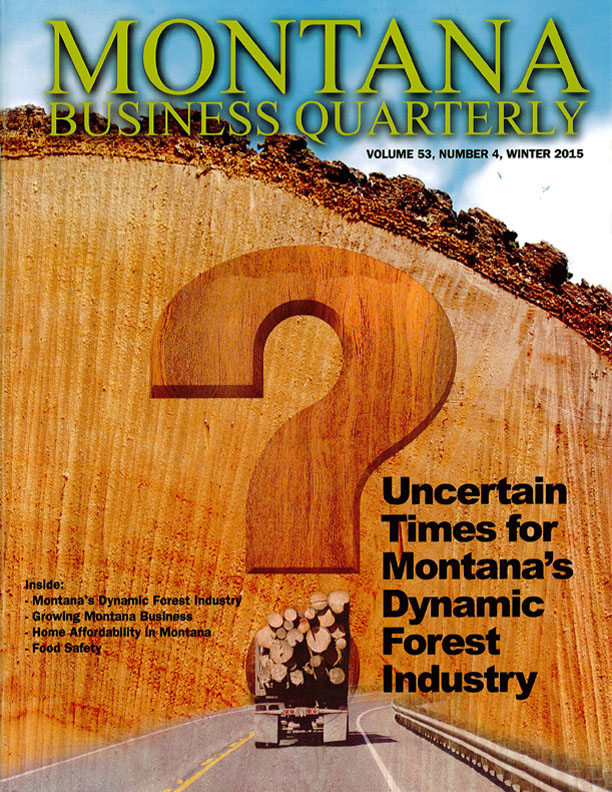MONTANA BUSINESS QUARTERLY
Volume 53, Number 4, Winter 2015 |
|||
 |
Uncertain Times for Montana's Dynamic Forest Industryby Kate C. Marcille, Steven W. Hayes and Todd A. Morgan |
||
Montana's forest industry is comprised of more than 80 active facilities that manufacture a variety of wood products. The industry receives its raw material - timber - from forests both inside and outside the state, relying on landowners, foresters, loggers and truck drivers to provide that timber year after year. Montana mills sell their forest products into local, national and international markets. Throughout this supply chain, from forest to mill to final consumer, there are numerous uncertainties and constant changes in both timber supply and wood products demand. | |||
Home Affordability in Montana: An Issue Once Again?by Kyle Morrill and Patrick M. Barkey |
Since 2010, real estate markets are returning to health, and housing prices have been moving up again in most Montana markets. And those prices are pushing beyond, in some cases, what median income Montana households can comfortably afford. The biggest disparities are arising in the rental markets, which have seen higher demand as homeownership rates continue to slide downwards. But single family home prices have been rising fast as well, especially in the western half of the state. |
Food Safety: New Regulations and New Resources for Montana Food Businessesby Steph Hystad, Montana Department of Agriculture, and Claude Smith, Montana Manufacturing Extension Center |
Nearly 1 in 6 Americans get sick from foodborne illnesses every year, and approximately 3,000 die each year therefrom, according to the Centers for Disease Control and Prevention. Most of these illnesses are preventable through the use of safe food handling practices -- throughout each step in the food processing supply chain. |
Growing Montana One Business at a Timeby Missy Lacock, with contributions by Olivia Carney, Joe Fanguy, and Patty Cox |
Economic growth is nothing more than the sum total of growth in businesses everywhere - in communities, as well as the state and the nation. And so strategies and policies that are aimed at producing economic growth must ultimately help businesses grow. How can we make that happen? |

